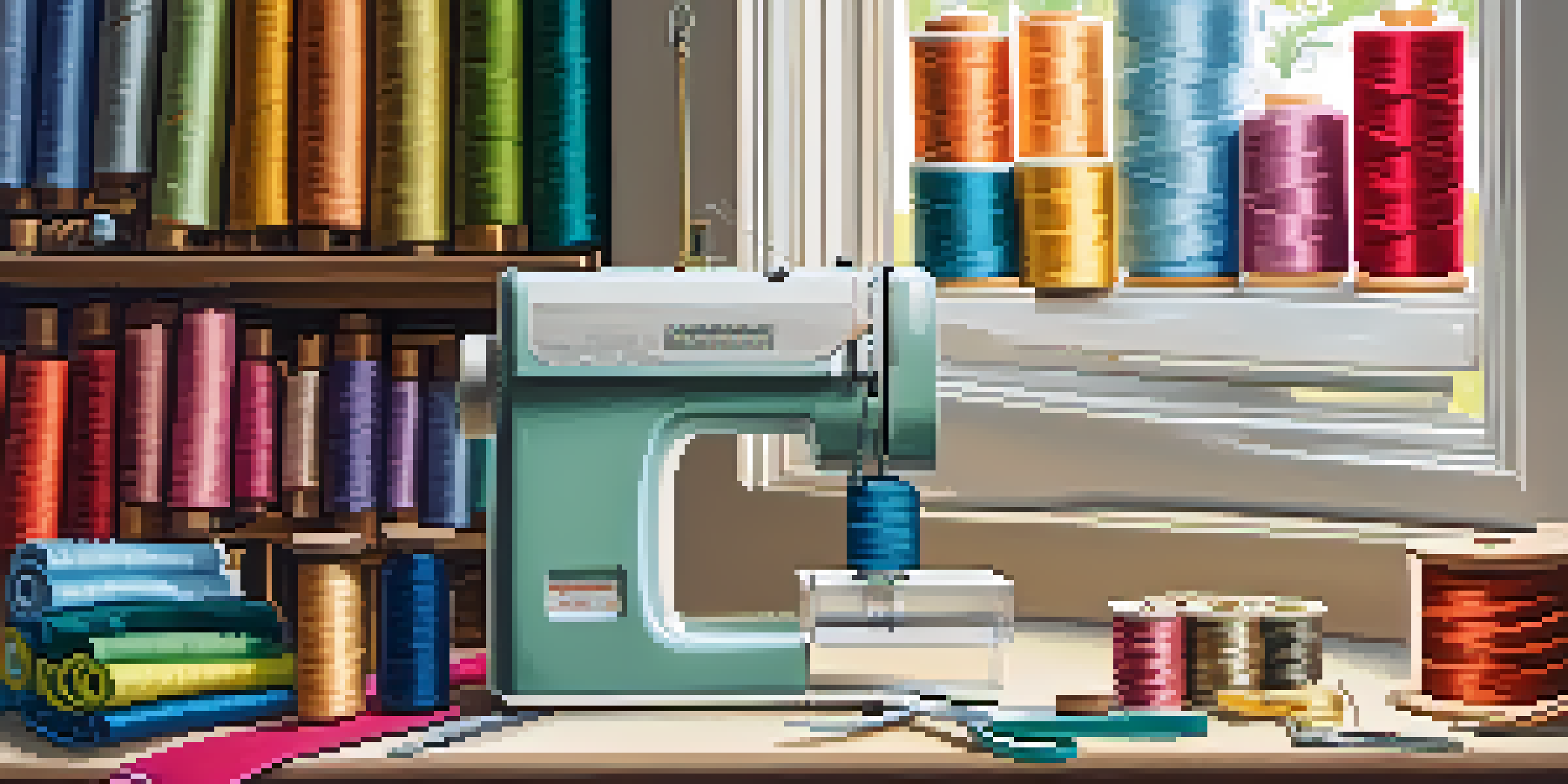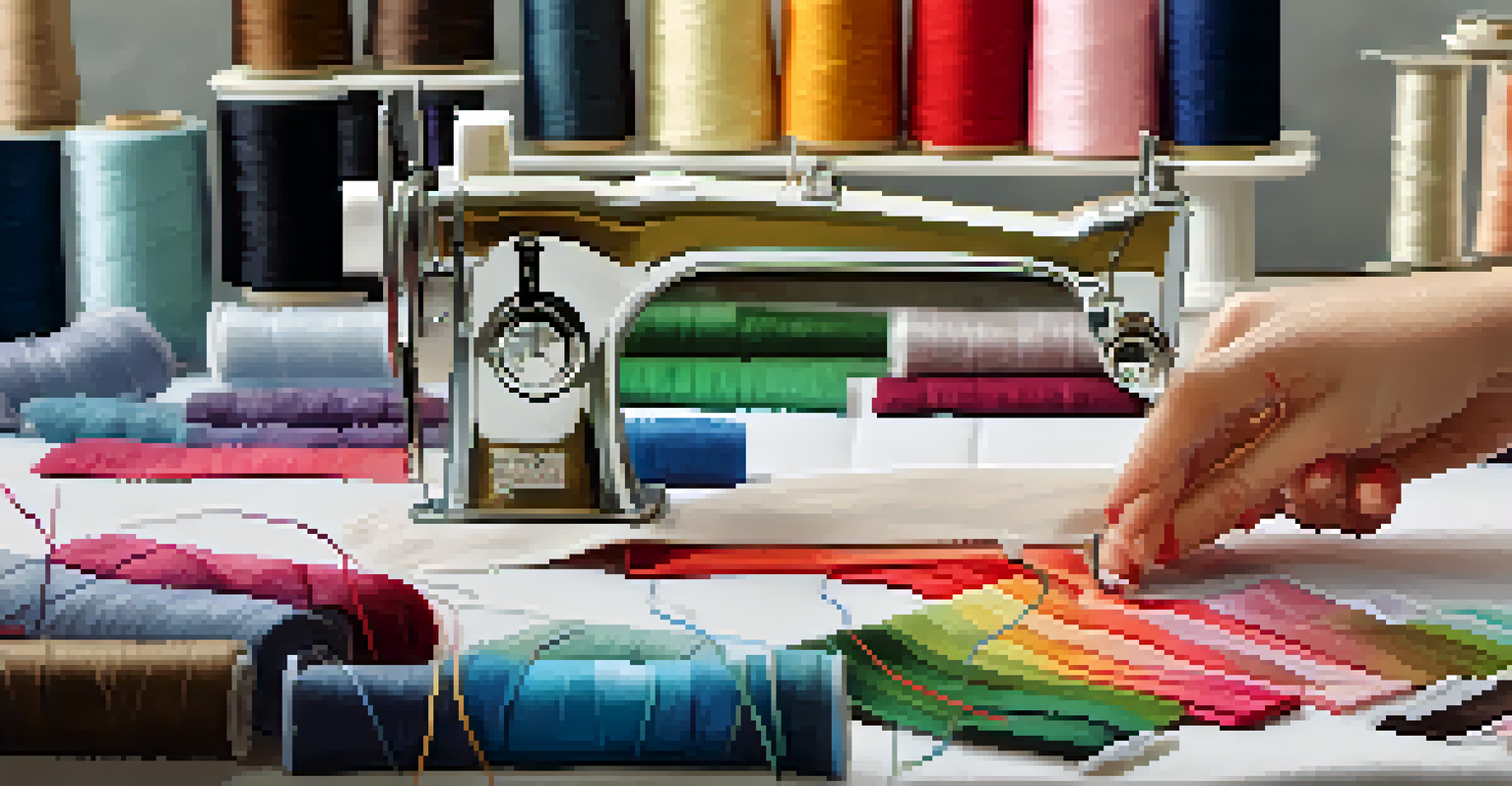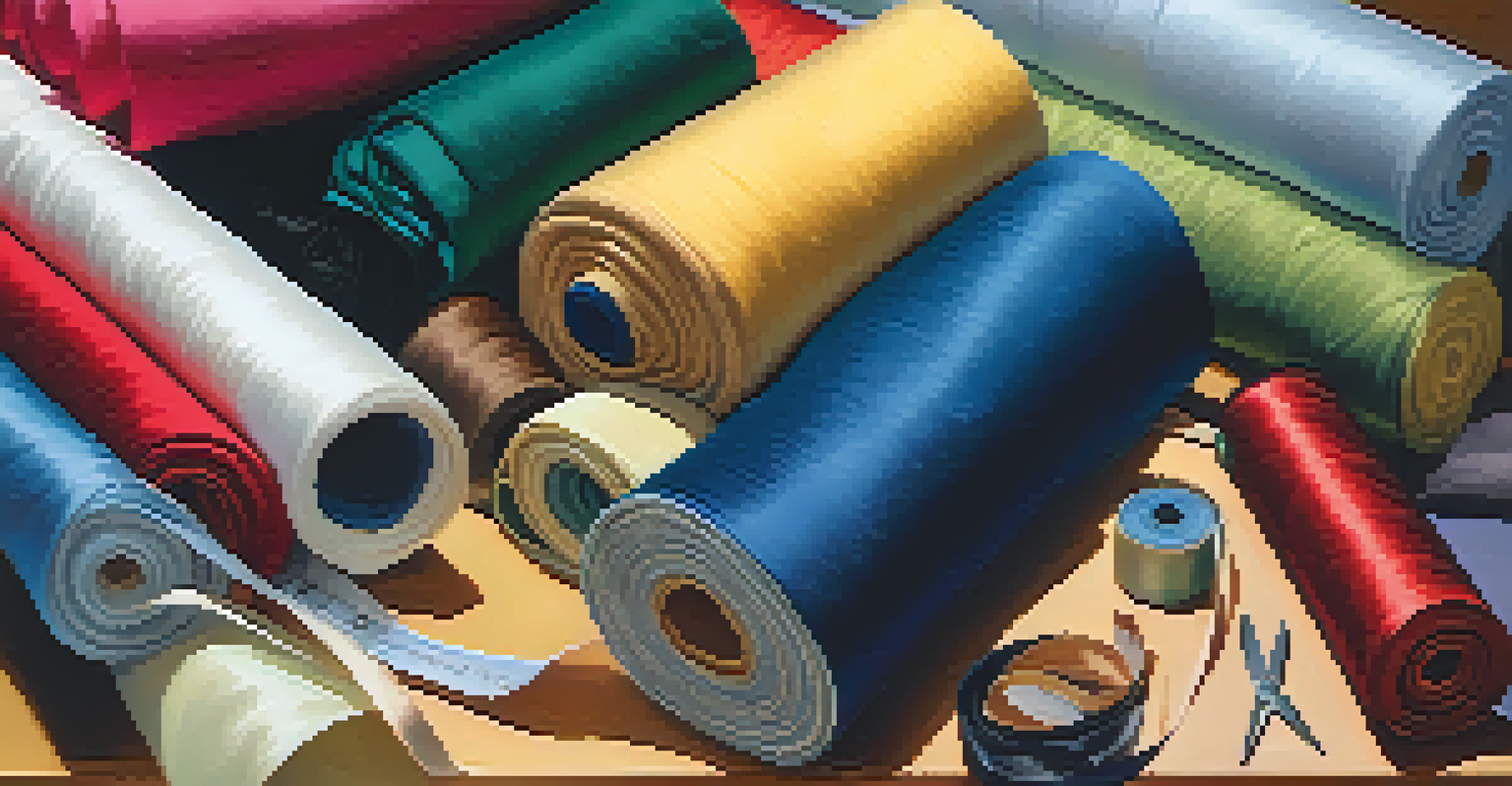Sewing Basics for DIY Fashion: Essential Skills for Beginners

Understanding the Essential Tools for Sewing
Before diving into any sewing project, it's crucial to have the right tools at your disposal. A sewing machine, fabric scissors, pins, and a measuring tape are just the beginning. Think of these tools as your trusty sidekicks, each playing a vital role in bringing your DIY fashion dreams to life.
The sewing machine is a great piece of equipment, but it can't do everything. You still need the human touch to bring your ideas to life.
In addition to the basics, consider investing in a seam ripper for those inevitable mistakes and a rotary cutter for precise cutting. These tools will not only enhance your sewing experience but also make it more enjoyable. The better your tools, the more confident you will feel as you create.
Remember, having the right tools can make all the difference. Just like a chef needs quality knives, a sewer benefits from dependable equipment. With your toolkit ready, you're one step closer to crafting beautiful garments.
Choosing the Right Fabric for Your Projects
Fabric selection is a vital skill every beginner should master. Different fabrics behave differently; for instance, cotton is forgiving and easy to sew, while silk can be slippery and challenging to work with. Understanding fabric types will help you choose the right materials for your projects.

It's also important to consider the weight and drape of the fabric. Lightweight fabrics may flow beautifully but require more finesse, while heavier fabrics are often more forgiving for beginners. Think of fabric as the canvas for your artistic expression—choose wisely to ensure your vision comes to life.
Essential Sewing Tools Matter
Having the right tools, like a sewing machine and fabric scissors, is crucial for a successful sewing experience.
Don’t hesitate to experiment with various fabrics as you gain confidence. Over time, you'll develop a sense for what works best for your style and skill level. With each choice, you're one step closer to becoming a skilled DIY fashionista.
Mastering Basic Sewing Techniques
Once you have your tools and fabric, it's time to dive into basic sewing techniques. Starting with simple stitches, like the straight stitch and zigzag stitch, will familiarize you with your sewing machine. These foundational techniques are essential for constructing nearly any garment.
Sewing is not just a skill; it's a form of expression. Each stitch tells a story.
Practice makes perfect, so don't be discouraged if your first few attempts are less than perfect. Just think of them as stepping stones on your journey. As you practice, you'll begin to develop muscle memory, making it easier to sew confidently and efficiently.
As you get more comfortable with the basics, you can start exploring more advanced techniques, such as gathering or inserting zippers. Each new skill you master will add to your toolkit and open up a world of possibilities for your DIY fashion projects.
How to Read and Use Sewing Patterns
Sewing patterns can seem intimidating at first glance, but they are incredibly helpful for beginners. Think of a sewing pattern as a roadmap for your project, guiding you through each step. Learning to read and interpret these patterns will empower you to create garments with more precision.
Each pattern includes crucial information, such as fabric requirements, cutting layouts, and instructions for assembly. Take your time to study the pattern before you start; understanding the layout can save you time and frustration later on. Make notes or highlight key sections to keep yourself organized.
Fabric Choice Influences Projects
Selecting the appropriate fabric type and weight is key to achieving the desired look and ease in your sewing projects.
As you become more familiar with patterns, you'll discover that they come in various skill levels. Start with simpler patterns that match your abilities, and gradually challenge yourself as you gain confidence. This way, you’ll evolve from a beginner to a seasoned DIY fashion designer in no time!
The Importance of Accurate Measurements
Accurate measurements are the foundation of successful sewing. Taking the time to measure yourself properly can make the difference between a garment that fits perfectly and one that doesn’t. Use a measuring tape to carefully note your bust, waist, and hip measurements, and always add a bit of ease for comfort.
When working with patterns, it’s essential to compare your measurements with the size chart provided. Don’t be afraid to make adjustments; patterns often have built-in seam allowances to accommodate this. Think of it as tailoring your creation to fit your unique body shape.
As you gain proficiency, you'll become more adept at making alterations. This skill will not only improve the fit of your garments but also give you a sense of ownership over your creations. Remember, every great designer started where you are now—learning how to make things fit just right!
Finishing Techniques for a Professional Look
Finishing techniques are what elevate your DIY fashion projects from homemade to high-quality. Techniques like serging or zigzag stitching the edges of your fabric prevent fraying and give your garment a polished edge. These small details can significantly impact the overall look of your creation.
Don't overlook the importance of pressing your seams as you sew. Ironing not only helps your garment look crisp but also ensures that seams lay flat, giving your project a professional finish. Think of pressing as the final touch that transforms your hard work into something you can be proud of.
Practice Builds Sewing Confidence
Regular sewing practice, starting with simple projects, helps you gain confidence and refine your skills over time.
As you practice these finishing techniques, you’ll begin to notice how they enhance your sewing projects. With each completed piece, you'll develop an eye for detail, making your DIY fashion journey even more fulfilling.
Building Your Sewing Confidence Through Practice
Like any new skill, sewing takes practice, and the more you sew, the more confident you’ll become. Start with small projects, such as tote bags or simple skirts, to build your skills gradually. Each completed piece is a step toward mastery, so celebrate your progress!
Don’t be discouraged by mistakes; they are part of the learning process. Every seasoned sewer has stories of projects gone awry, and each mishap offers valuable lessons. Embrace these moments as opportunities to grow and refine your technique.

Connect with other sewing enthusiasts, whether through online forums or local groups. Sharing your experiences and learning from others can boost your confidence and provide inspiration. Remember, every expert was once a beginner, and with time and practice, you’ll find your sewing groove!